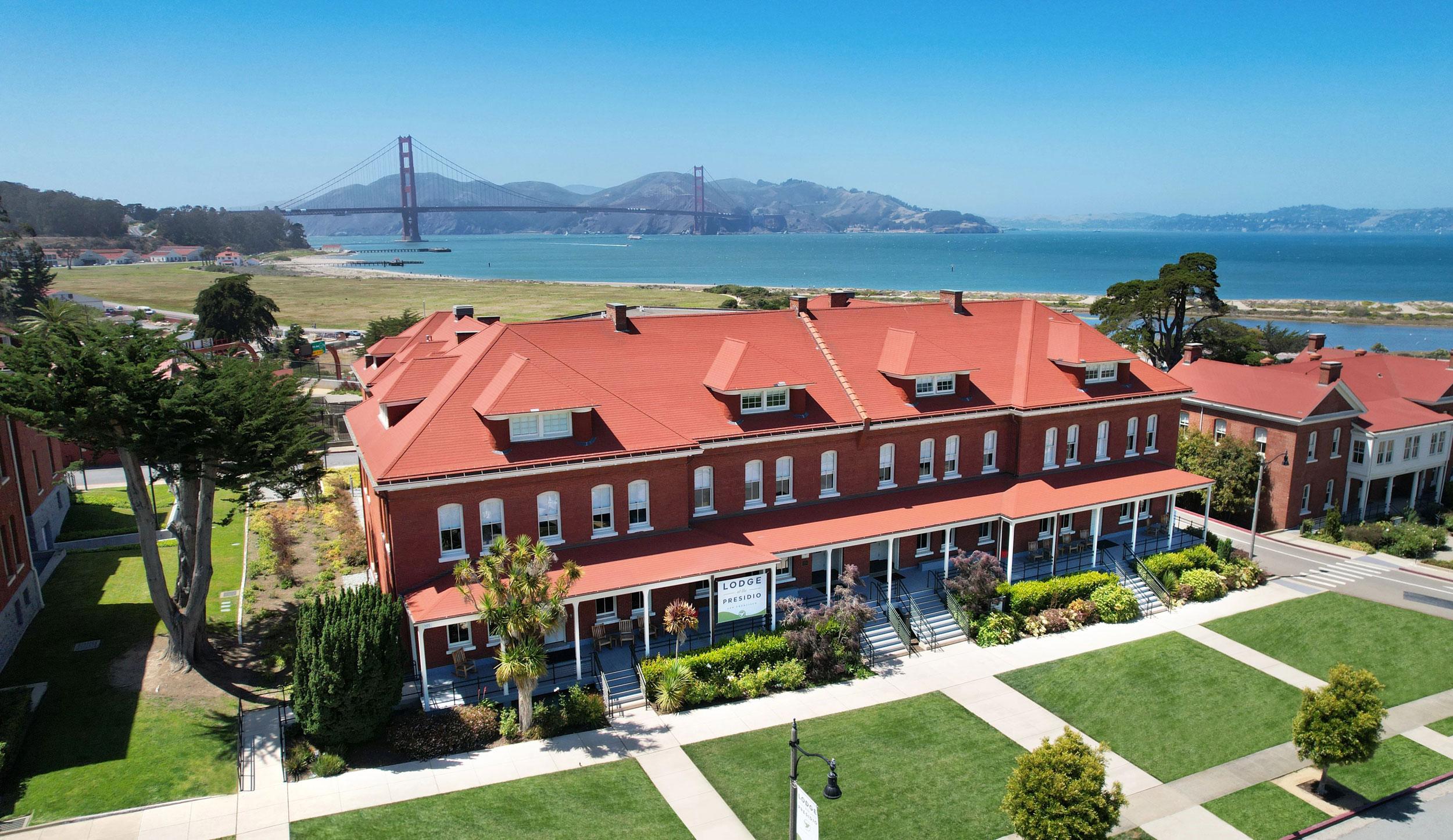Jun 14, 2018
Then and Now: A Historic Barrack Becomes the Lodge at the Presidio
After an extensive rehab, a reimagined historic treasure, opened its doors.On June 28, 2018, after an extensive rehabilitation, the Lodge at the Presidio opened its doors to the public. This 42-room national park hotel is the closest accommodation in San Francisco to the one-and-only Golden Gate Bridge. But it’s also a place rich in history. The lodge is located in one of the Presidio’s five iconic red brick Montgomery Street Barracks, built between 1894 and 1897 to house 160 Army soldiers. Here’s a look back at the history of this beautiful building, and some of the people who once lived there.
A View of the Laundresses’ Quarters from 1869
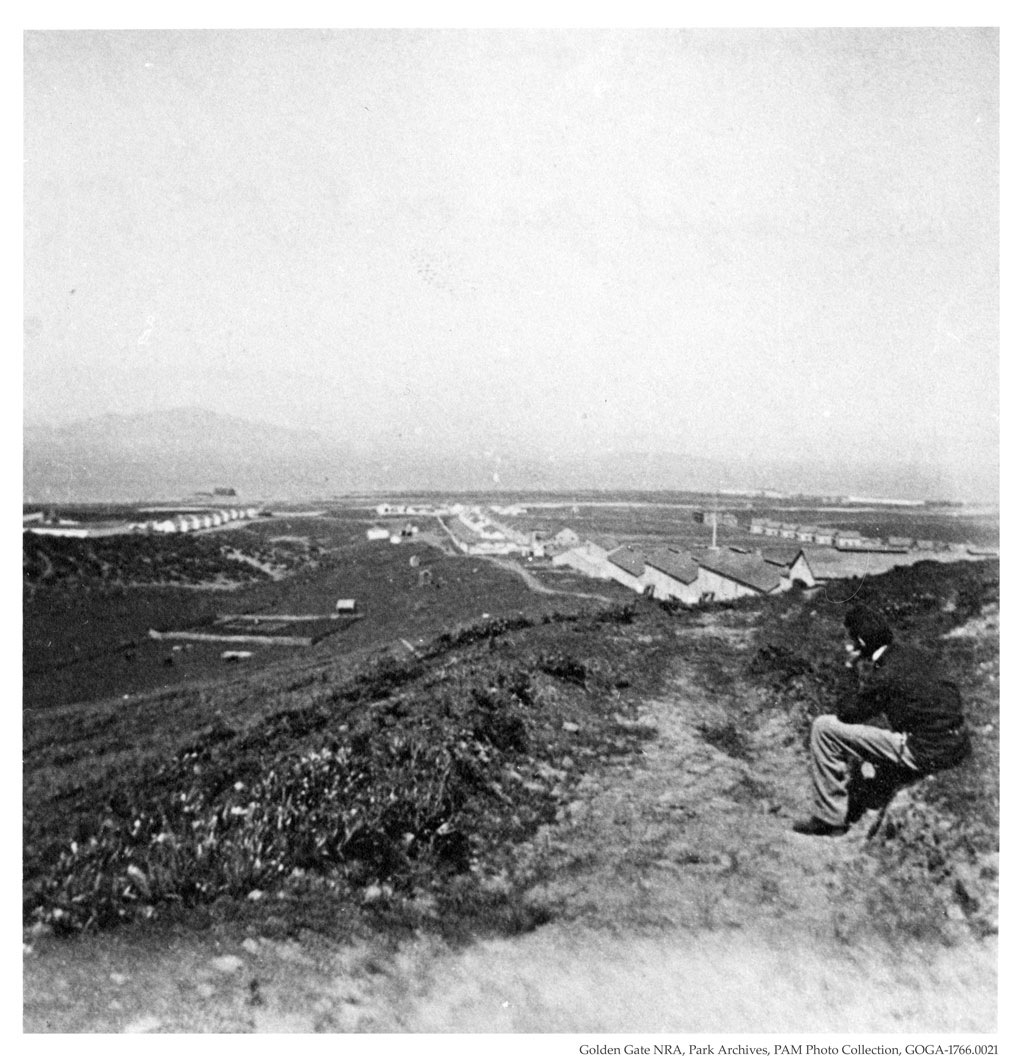
Then: 1869 – You might not recognize it at first, but this is the Presidio of San Francisco as it appeared in 1869 when famed photographer Eadweard Muybridge photographed a view looking northward over the Presidio toward the San Francisco Bay. See the row of little white buildings to the left? At the far end of that row is where the Lodge at the Presidio sits today. But back then, those buildings were the laundresses’ quarters. The laundresses were women employed by the Army for most of the 1800s to wash the clothes of enlisted men. The men paid the laundresses directly for their services, and the Army provided them with rations and quarters. These women were often married to non-commissioned officers and they lived in accommodations that were simple, cheap, and located away from the heart of the post.
Image courtesy of the Golden Gate NRA, Park Archives
The Newly Built Montgomery Street Barracks in 1895
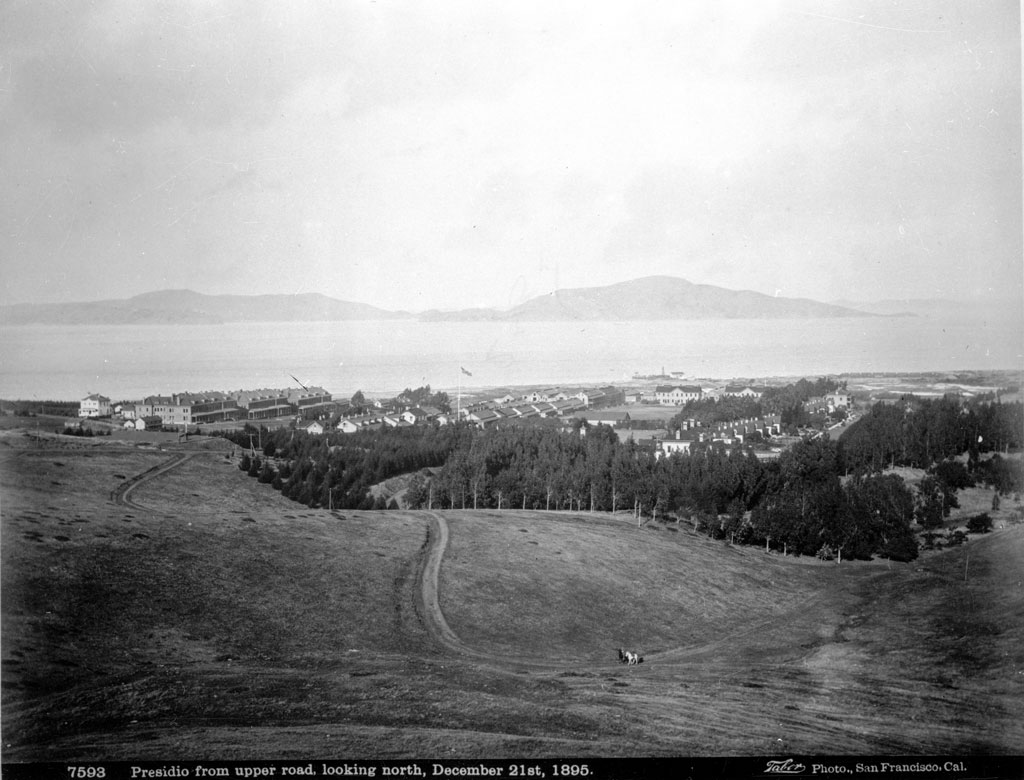
Then: December 21, 1895. Here’s a rare view of the Montgomery Street Barracks – on the far left of the image – with only the first three completed. Beginning in the 1880s, with increased settlement across the West, the US Army began closing down small, scattered posts and concentrating soldiers in installations located at strategic locations, such as the Presidio. This concentration enabled the Army to construct more enduring buildings made from stone, brick, and concrete built from professional, standardized plans. Before the brick barracks were built, most of the soldiers at the Presidio were living in crowded wooden barracks built during the Civil War, and they were eager for a move. The Army began constructing the new barracks in 1894. The barracks that is now the Lodge at the Presidio was finished in the spring of 1897. With the completion of the Montgomery Street Barracks, the Presidio became one of the five largest Army posts in the country.
Image courtesy of OpenSFHistory.org
Battery F of the Third Artillery Regiment at Building 105 in 1897
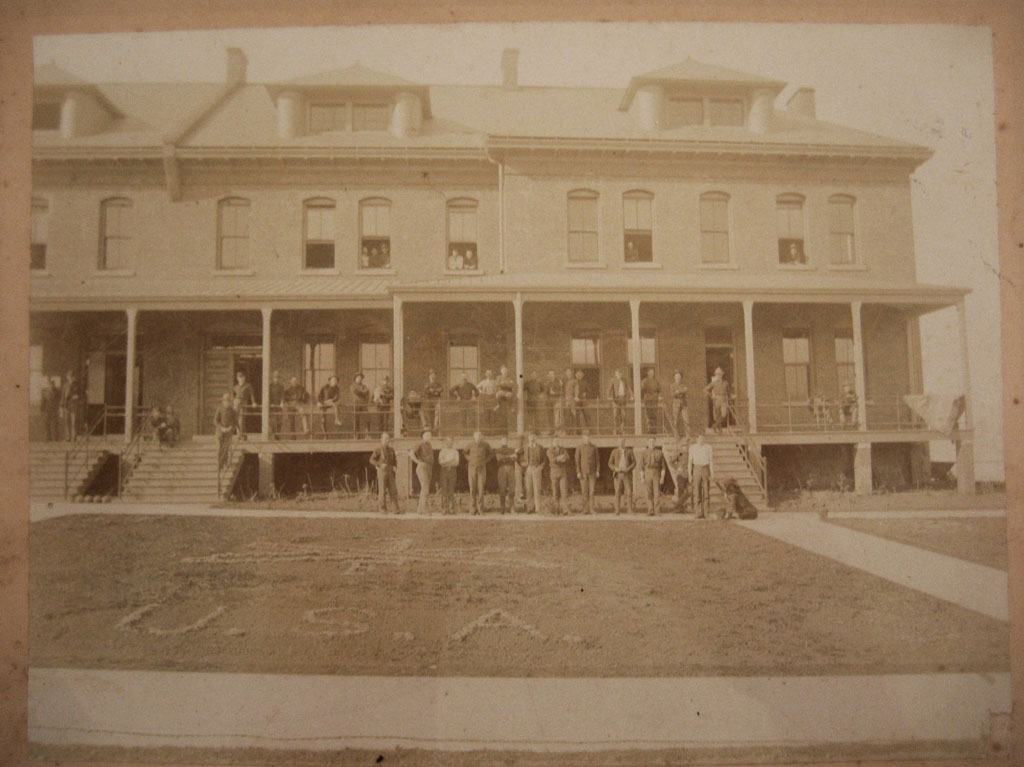
Then: November 30, 1897. Seen here enjoying their new home is Battery F of the Third Artillery Regiment, the first Army unit to occupy the north side of the building that now houses the Lodge at the Presidio. Designed in the colonial revival style, the new barracks were a vast improvement on the old ones. They held two companies, each with its own mess hall and kitchen on the first floor. Bathrooms were now indoors while day rooms, reading rooms, barber shops, and tailor shops were on the second floor. One reporter for the San Francisco Call even went so far as to proclaim: “The accommodations for the men will be equal to those of a first-class hotel and contain all the modern improvements for health and comfort.” The men of Battery F only got to live there a few months because they were called to action in April 1898 when the United States went to war with Spain. In July, they would find themselves on the other side of the continent invading the Spanish colony of Puerto Rico.
Image courtesy of the Golden Gate NRA, Park Archives
The 16th Infantry Prepare Building 105 for Inspection
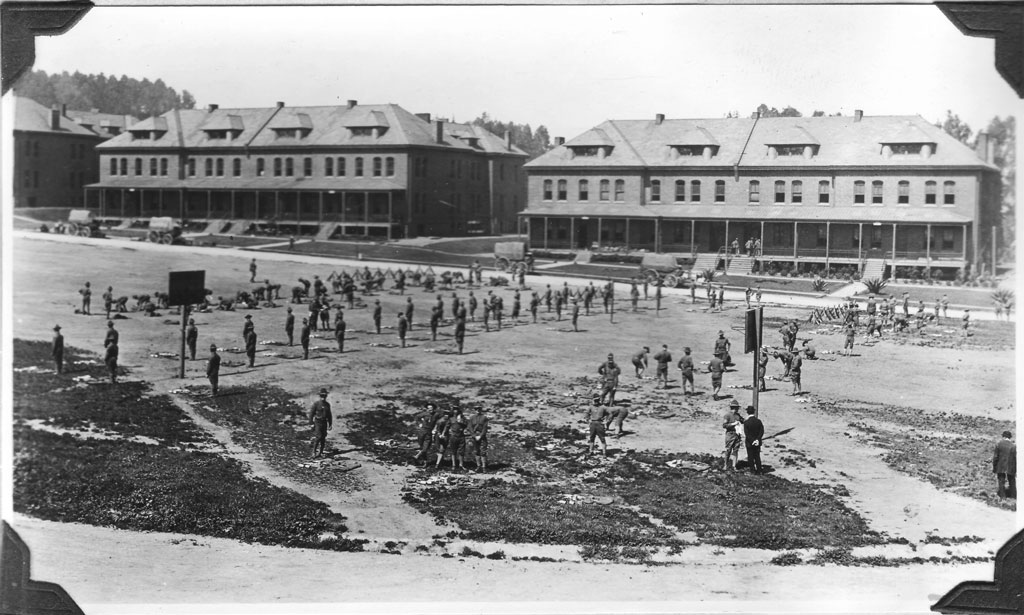
Then: April 18, 1914. Life became even more comfortable when electricity was installed in October 1911. Coast artillerymen were living in the building at that time, but in June 1912 they moved to the newly completed Fort Winfield Scott – conveniently located near the coastal guns. A month later, soldiers of the 16th Infantry moved into what’s now the lodge, shown in this photo preparing for an inspection. They deployed from the Presidio in April 1914 to Texas under the command of Brigadier General John Pershing to monitor the United States border during the Mexican Civil War. Some of them were part of the Punitive Expedition into Mexico two years later. Late in 1915, during San Francisco’s Panama-Pacific International Exposition, the building was home to companies of the 24th Infantry Regiment, one of the segregated African-American regiments known as Buffalo Soldiers (unfortunately, we don’t have any pictures of this regiment in this building).
Image courtesy of the California State Library, Sutro Branch – Tucker Beckett collection
“San Francisco’s Own” at Building 105 in 1941
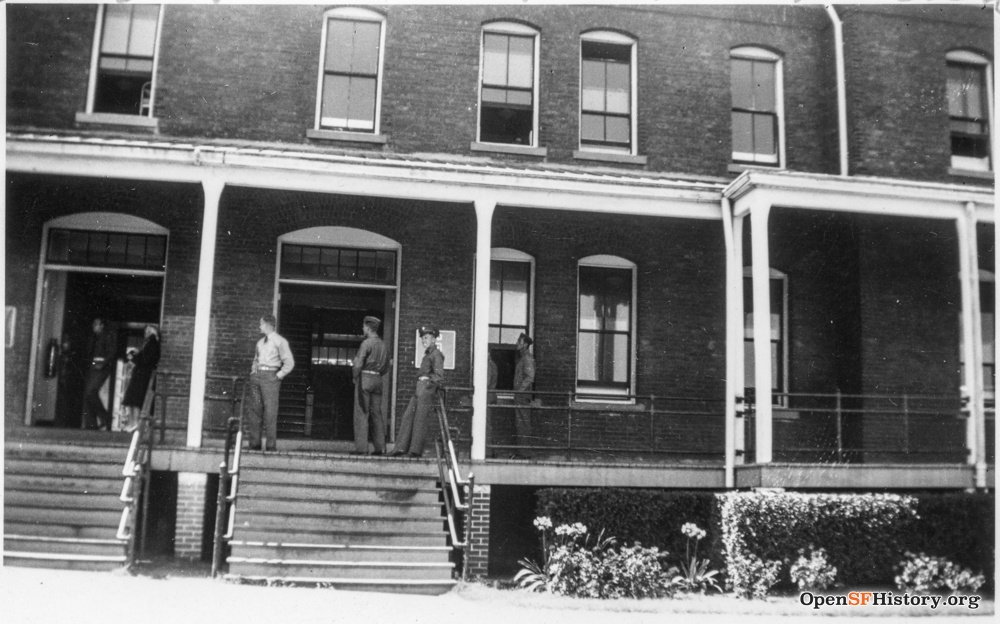
Then: 1941. For most of the two decades between World War I and World War II, the building was occupied by the 30th Infantry Regiment, which became known as “San Francisco’s Own” since it was stationed here so long. This photo shows some men relaxing on the front porch. Company I lived there in 1941 and made a photographic yearbook of the regiment for Christmas. They didn’t spend Christmas at the Presidio that year though. Instead, in November they were sent north to Camp Lewis. A year later, after the United States joined World War II, they were storming the beaches of Morocco in North Africa to help recover it from the control of German armies.
Image courtesy of OpenSfHistory.org
See the 30th Infantry Regiment’s photographic yearbook >>
Cartoonist Garold B. Ratzlaff’s Contribution to The Presidio Sun Newspaper from 1944
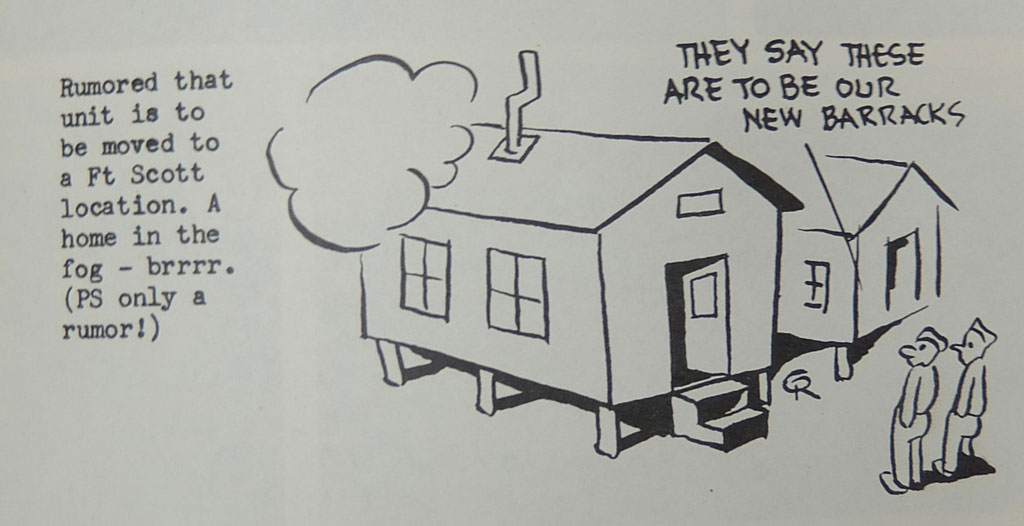
Then: 1944. Late in World War II, soldiers from the U.S. Army Signal Corp’s 234th Signal Operations Company moved from their temporary barracks at Crissy Field to the building. These soldiers were responsible for maintaining communications between Western Defense Command (WDC) headquarters at the Presidio, the units it controlled along the West Coast, and the guerilla fighters in the Philippines resisting the Japanese occupation. Garold B. Ratzlaff was a cartoonist who was part of the company. He frequently contributed to the WDC’s newspaper, The Presidio Sun. As part of the Veterans History Project, the Library of Congress made available the cartoons he created and an interview with him about his wartime experiences with the 234th.
Image courtesy of the Golden Gate NRA, Park Archives
Home to the 602nd Air Support Unit in 1951
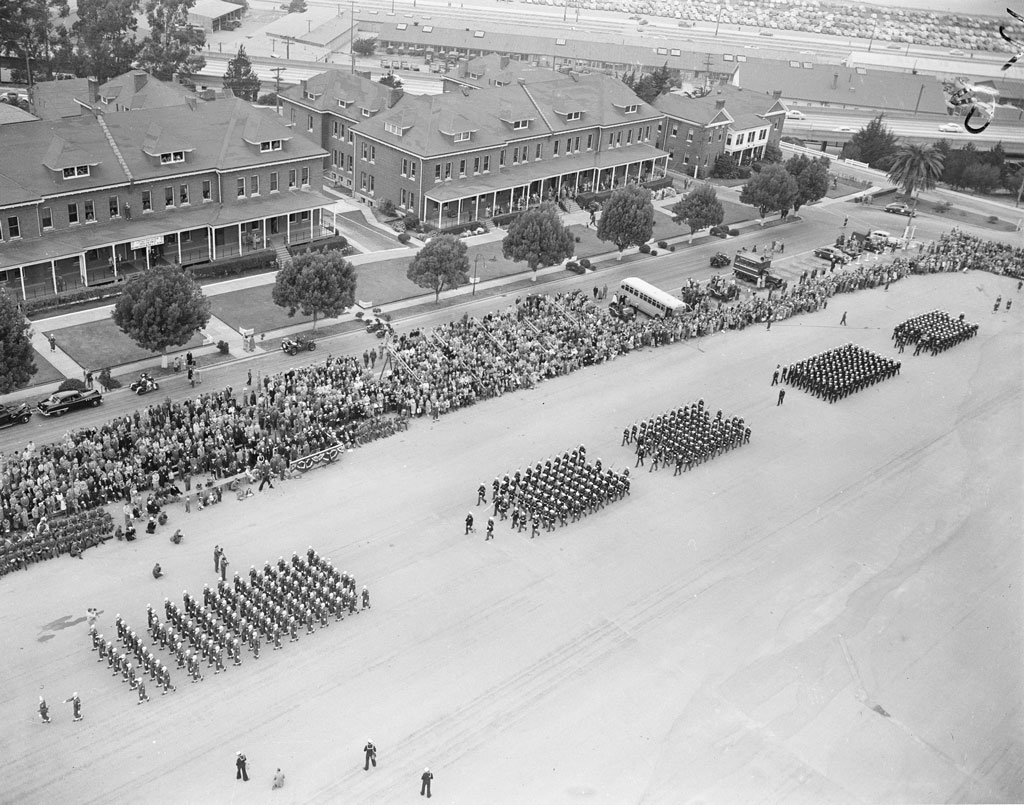
Then: May 20, 1951. For much of the 1950s, Building 105 was home to the 602nd Area Support Unit, which was responsible for managing the variety of logistical services needed to keep the Presidio running at that time. In the year of this photo was taken, this unit also provided food for the signing of the Security Treaty with Japan in 1951 at what is now the Golden Gate Club. This picture shows troops drilling on the Main Parade Ground for visitors a few months before the outbreak of the Korean War.
Image courtesy of The Bancroft Library, University of California, Berkeley.
From Barracks to Offices for the Federal Emergency Management Agency (FEMA) in 1983
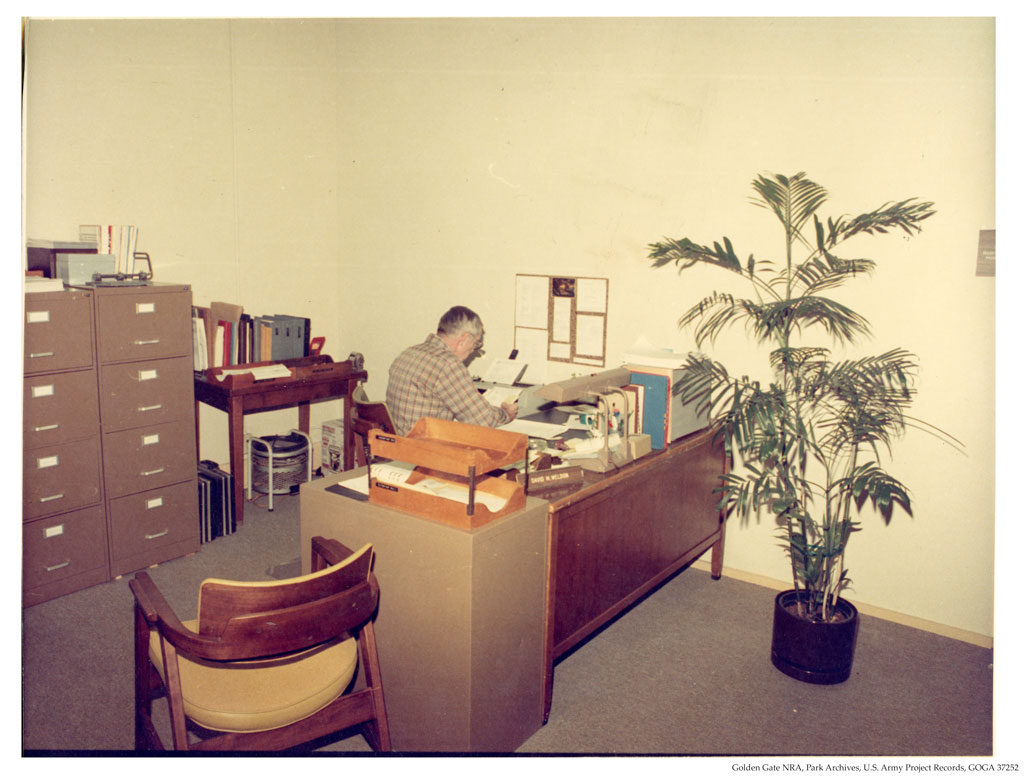
Then: 1983. In 1971, realizing that dormitory style housing was no longer appealing to recruits, the Army altered the building to create partitioned, shared bedrooms or cubicles, reducing the building’s capacity to 31 men. In August 1980, the last enlisted men to live here moved to Fort Winfield Scott, and the building ceased to be Army barracks. In 1983, it was converted into offices for the Federal Emergency Management Agency’s regional headquarters.
Image courtesy of the Golden Gate NRA, Park Archives
Lodge at the Presidio
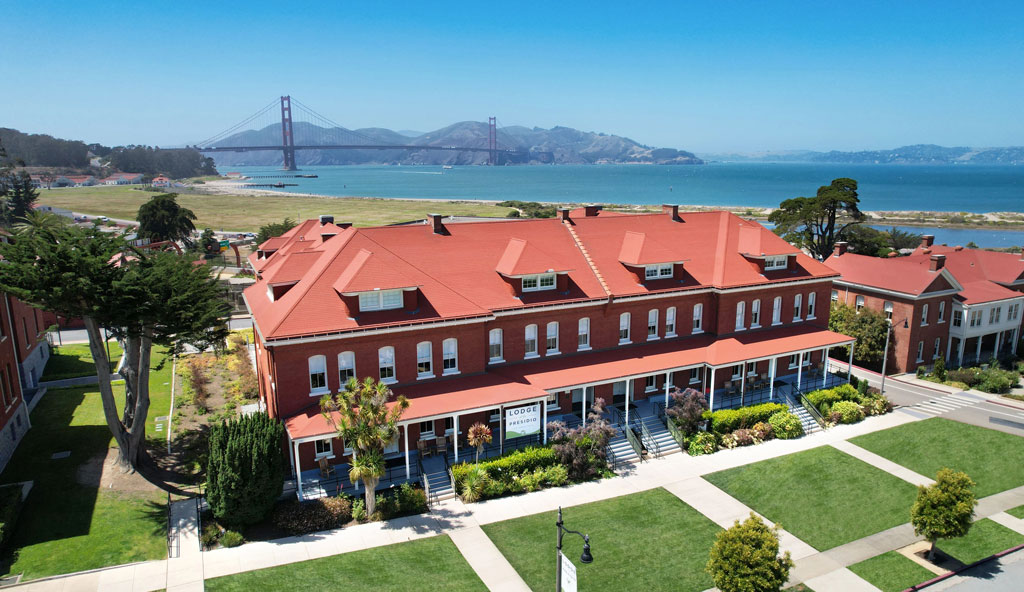
Now: Today this 125-year old barracks has been transformed into a contemporary launching pad for visitors’ national park adventures featuring unparalleled views of the Golden Gate Bridge, the Presidio’s lush 300-acre forest, the San Francisco Bay, and the city skyline. To learn more and make a reservation, visit www.PresidioLodging.com.
